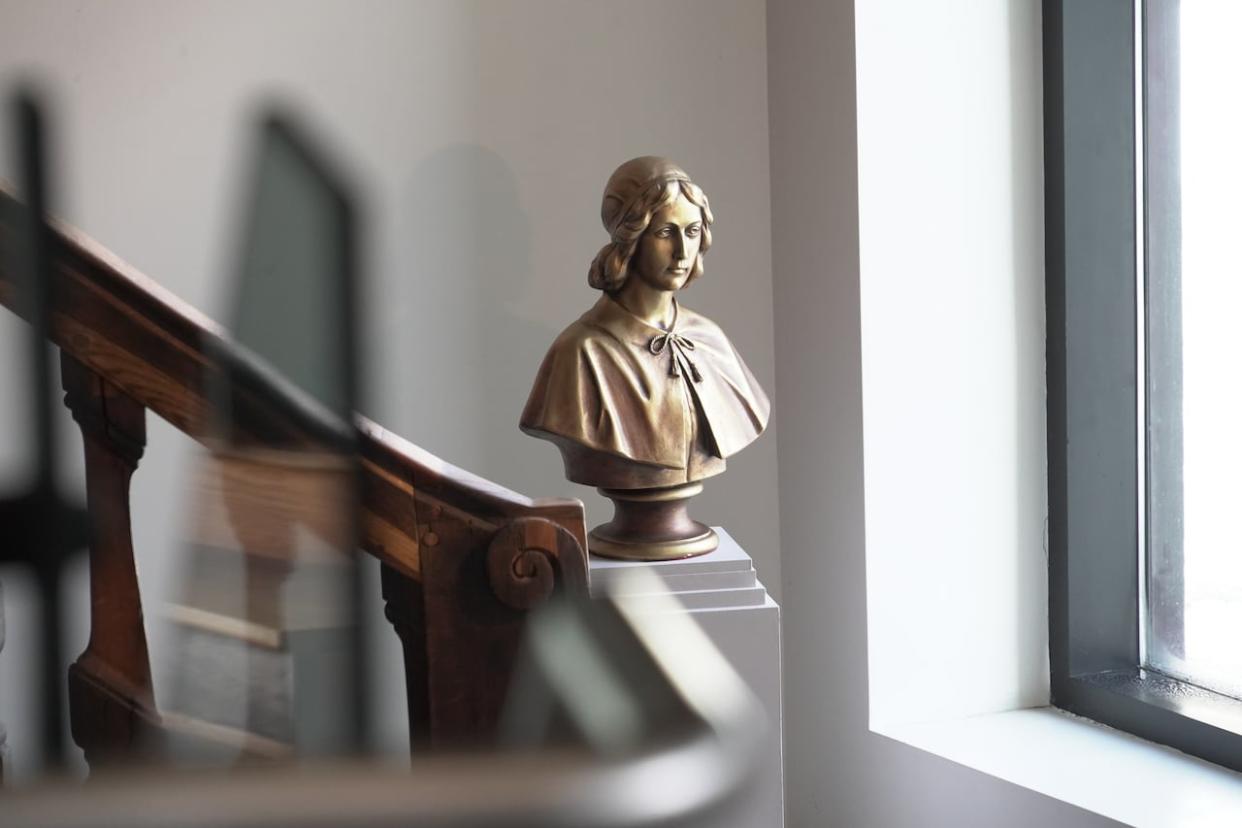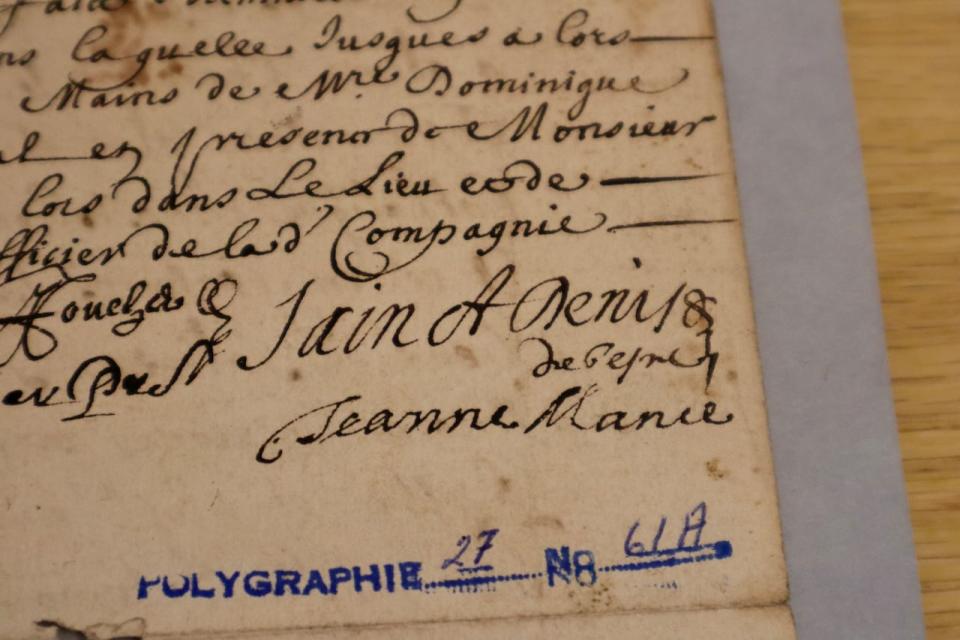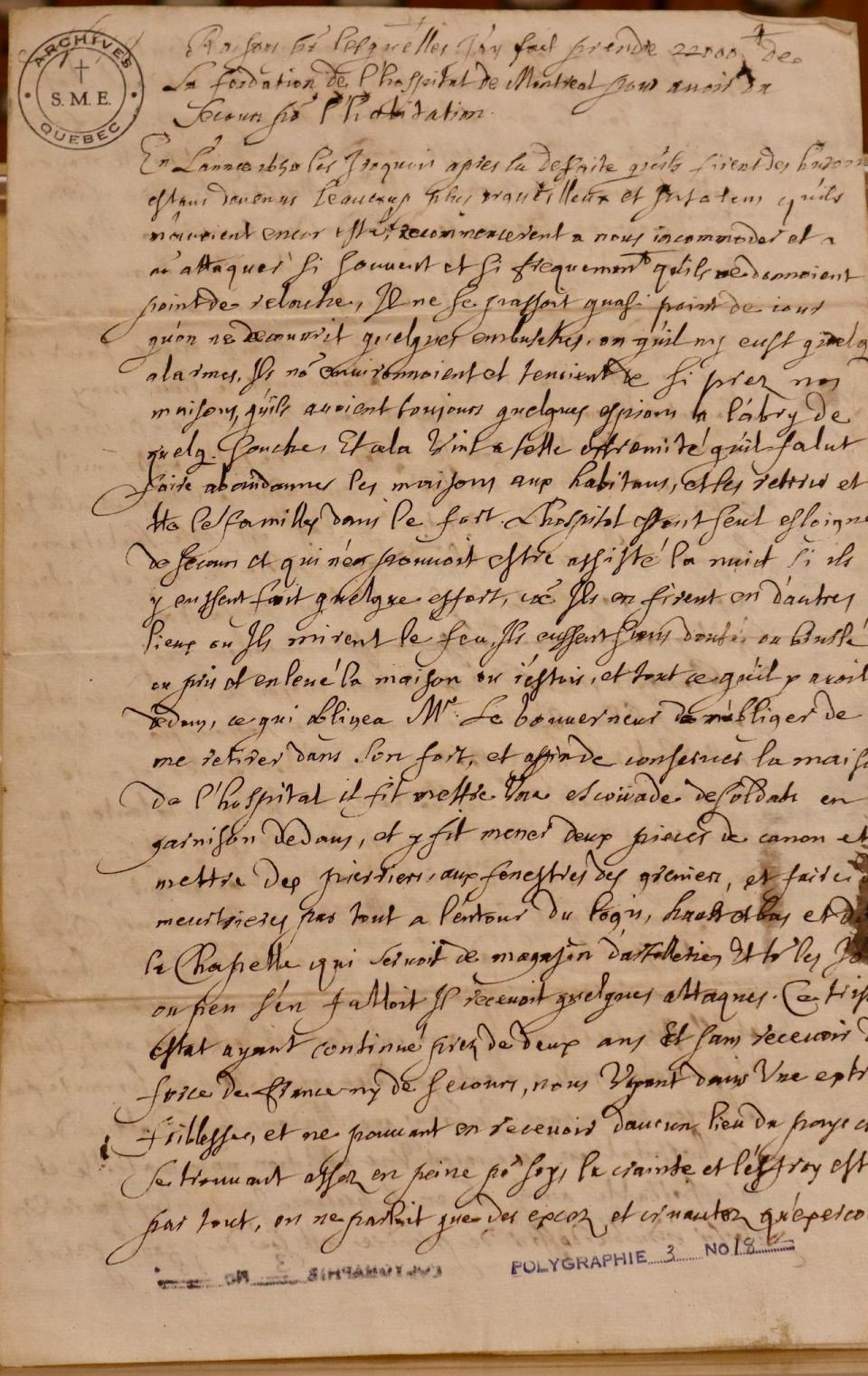Newly rediscovered letter from Jeanne Mance sheds light on life in early Montreal

- Oops!Something went wrong.Please try again later.
A letter written by the hand of Jeanne Mance, the French nurse who co-founded Montreal, has been rediscovered in the Quebec City seminary's archives.
Mance was the first secular nurse in Montreal and the founder of the first hospital there, Hôtel-Dieu de Montréal. She came to New France at the age of 34 and died in 1673 at the age of 67, leaving almost nothing behind in the way of journals or correspondence.
Historical documents related to Mance are extremely rare as the Hôtel-Dieu, founded in 1642, suffered three devastating fires (1695, 1721 and 1734) which decimated a large part of the hospital's archives.
This has made it difficult for historians to reconstruct her past.
The several-page letter, found in the seminary, explains why Mance gave 22,000 livres to Paul de Chomedey de Maisonneuve in 1653. The livre was the currency of France at the time, and the primary currency of New France.
That 22,000-livres sum is the equivalent to about $730,000 today. It came from patron Angélique Faure de Bullion, a French aristocrat who contributed greatly to financing the construction of Hôtel-Dieu.

Jeanne Mance's signature can be seen on the letter. (Frédéric Vigeant/Radio-Canada)
The money was for Maisonneuve's effort to recruit 100 settlers from France.
"So this is the last chance. We get 100 settlers to come, or we shut down Montreal, and everyone goes back to France," Mance wrote.
Montreal under siege
At the time, the small colony, which would become Montreal, was under siege by Iroquois who were allied with the British.
Paul Labonne, general director of the Musée des hospitalières de l'Hotel Dieu de Montréal, said discovering the letter opens new avenues of research.
"It also confirms the major role played by Jeanne Mance in the founding of Montreal," he said. "For more than 30 years, she was able to acquire everyone's trust so that Montreal could develop."

The letter by Jeanne Mance was written in 1653. (Frédéric Vigeant/Radio-Canada)
Labonne was going through some of the archives salvaged from the Hôtel-Dieu fires when he came across Mance's will. In it, she noted that she bequeathed all her personal papers to the archbishop in Quebec city.
He wondered if they could still be there.
Labonne made some calls and discovered several documents, including the handwritten letter, all sitting unnoticed in an archive. He found it with the assistance of archivist Peter Gagné of the Musée de la civilization.
"I really had chills. I said to myself: 'Wow!' First of all, it's a handwritten document by Jeanne Mance. She really explains what Montreal was like in 1650," he said.
"I had the impression that I was in Montreal at that moment."
The letter shows Montreal was struggling to survive. There were daily ambushes, and the population had dropped from 150 people to just 50, hence the desperate need for 100 new arrivals.
"It's a fabulous document, really, it helps us understand why Montreal was founded by a woman," Labonne said.
The letter had already been located in 1953 by Marie-Claire Daveluy for an article, The drama of the recruit of 1653, published in the Revue d'histoire de l'Amérique française.
Hope for more documents
Labonne said finding the letter gives him hope that there are other documents yet to be discovered that could tell us more about the early days of Montreal.
In a news release sent out by the Musée des hospitalières de l'Hotel Dieu de Montréal and the Musée de la civilisation, the letter is described as among the oldest documentation of French settler recruitment.
"This discovery is proof that, thanks to wise researchers like Paul Labonne, history continues to be written," said Stéphan La Roche, president and CEO of the Musée de la civilization in the news release.
"The archives of the Séminaire de Québec are rich and remain accessible to all people who wish to consult them to advance their research."

